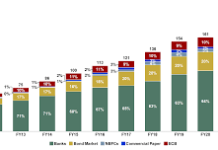In a bold move, several major pharmaceutical companies have announced they will begin selling some drugs directly to U.S. patients (i.e. bypassing intermediaries), accompanied by steep price cuts. These measures come in response to mounting political and regulatory pressure to rein in America’s notoriously high prescription drug costs.
This shift signals a potentially transformative moment in pharma distribution models, one that could reshape how U.S. patients access medicines and how drug companies manage margins.
The Policy Push Behind Pharma’s Pricing Shift
- The Trump administration has pushed pharmaceutical manufacturers hard, letters were sent to 17 major firms demanding substantial U.S. price reductions via “most-favored-nation” or equivalent pricing models.
- As part of these efforts, a government-run portal TrumpRx.gov is slated to launch in early 2026 to help patients purchase discounted prescription drugs directly from manufacturers.
- In parallel, companies that comply with price cuts may receive tariff relief or other incentives as part of negotiated deals.
Because U.S. patients often pay several times more than patients in other developed nations, this political backdrop has created urgency for pharma to adapt.
Pharma Front-Runners: Who’s Taking Action
Several top pharmaceutical companies have already begun adjusting their pricing and distribution strategies in response to U.S. government pressure. Here’s a breakdown of the key players and their moves:
- AstraZeneca – Has committed to selling select medications directly to U.S. patients through the upcoming TrumpRx portal. Some drugs will see up to 80% price reductions, marking one of the steepest discounts yet in the industry. The company’s cooperation also earns it temporary tariff relief for three years.
- Bristol Myers Squibb (BMS) – Rolled out a direct discount program offering more than 80% off list prices for specific drugs, including Sotyktu. The initiative targets patients who often fall through coverage gaps in the healthcare system.
- Pfizer – Entered into a new pricing agreement aligning Medicaid reimbursements with international benchmarks. The company plans to integrate direct-to-consumer sales for certain chronic-care medications while investing heavily in domestic manufacturing expansion.
- Novo Nordisk – Launched a direct-purchase plan that bundles telehealth consultations and home delivery, pricing Ozempic at around $499 per month for uninsured U.S. patients, nearly half its standard price.
- Eli Lilly – Opened cash-based direct sales for its weight-loss drug Zepbound, bypassing insurers altogether. This approach gives the company greater control over pricing, marketing, and customer relationships.
- Amgen – Announced a 60% price cut for its cholesterol drug Repatha, available directly to U.S. consumers. This move is aimed at improving accessibility and boosting adoption among cost-sensitive patients.
These early adopters are setting a precedent for a new sales paradigm in the U.S. pharmaceutical market, one that prioritizes affordability, transparency, and direct engagement with patients.
The Strategic Upside and the Hidden Risks
The pharma industry’s shift toward direct-to-consumer sales presents a mix of opportunities and challenges. While the long-term potential is promising, the road ahead is far from smooth.
Opportunities:
- Affordable Access for Patients – Direct sales bypass insurance intermediaries and pharmacy benefit managers, enabling manufacturers to offer deep price cuts and greater transparency.
- Data-Driven Patient Insights – Engaging patients directly helps companies collect valuable behavioral and adherence data to refine product strategy and post-market support.
- Brand Control & Loyalty – Direct channels allow pharma firms to own the customer relationship, enhancing trust and long-term loyalty.
- Regulatory Goodwill – Firms demonstrating compliance with federal pricing directives may receive incentives such as tariff relief or fast-track regulatory approvals.
- Operational Agility – Adopting a D2C model helps companies test new pricing frameworks, pilot telehealth bundles, and explore subscription-based medication plans.
Challenges:
- Pushback from Insurers & PBMs – The move undermines traditional reimbursement structures, potentially creating resistance from payers and pharmacy networks.
- Regulatory and Legal Complexity – Direct sales must navigate FDA distribution rules, HIPAA compliance, and state-level pharmacy regulations.
- Higher Operational Costs – Managing logistics, fulfillment, and customer support directly can eat into cost savings from price reductions.
- Limited Market Reach – Many Americans still rely on employer or Medicare coverage, making D2C adoption slower among insured demographics.
- Profit Margin Pressure – Deep discounts may reduce profitability if not balanced by increased sales volume or government incentives.
What It Means for B2B Decision-Makers
If you’re in pharma services, healthcare IT, logistics, digital health, or retail pharmacy, here are implications and opportunities:
- Tech & data platforms – Systems that support direct ordering, patient onboarding, compliance tracking, and analytics will be in high demand.
- Logistics & fulfillment providers – Cold chain, last-mile, returns, companies with specialty delivery capabilities can partner with pharma producers.
- Telehealth & digital health integrators – There is a chance to bundle consultations, subscription models, and drug delivery.
- Insurance / payer models – You may see new hybrid models where drugs are reimbursed differently when sold D2C.
- Competitive differentiation – Pharma firms that master direct engagement may gain an edge in branding and customer loyalty.
Conclusion
The convergence of political pressure, regulatory incentives, and evolving consumer expectations is pushing pharma toward direct-to-consumer models accompanied by aggressive price cuts. While the approach carries risks, companies that execute thoughtfully can reshape patient access, reclaim value from intermediaries, and future-proof their business in an era of transparency and cost scrutiny.
This shift is not just a pricing tactic, it’s a potential recalibration of how medicines reach patients in the U.S. For B2B players, now’s the time to position around supporting tech, logistics, regulatory, and digital health infrastructure that powers this transformation.
I hope you find the above content helpful. For more such informative content, please visit Medtechreporter











